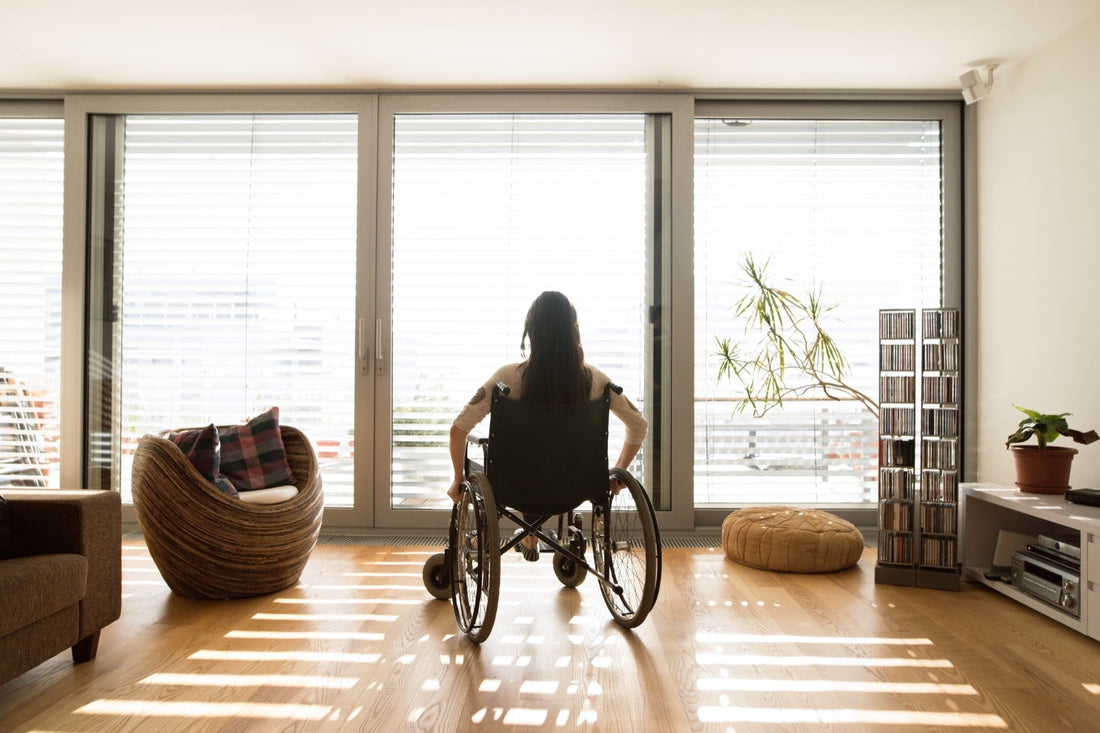Smart and assistive products for people with disabilities and seniors aging in place are not as common as one might imagine. Unfortunately, neither is accessible housing. Accessible housing is that which affords people with disabilities their right to fully use a space without endangering or unreasonably inconveniencing them. Sadly, such housing is stunningly rare in the United States. According to The League – an organization passionate about the independent living movement – fewer than “2% of housing units nationwide are accessible.” Furthermore, “fewer than five percent of units are livable for individuals with moderate mobility difficulties.”

Other studies have estimated around 6% of households are “adequately accessible” for those with a disability. These data are especially shocking given that – as outlined by the CDC – “61 million adults in the United States live with a disability.” 26% – one in four – of American adults deal with a physical or cognitive disability. As such, the PWD community makes up the largest minority group in the country. Yet – thirty years after the 1990 passage of the Americans with Disabilities Act – many governmental, commercial and private buildings remain inaccessible to the disabled.
Assistive Tech for Seniors Aging in Place and PWDs Grows – But Not Enough

High-profile stories of inspiring PWDs in leadership like Ortiz or notable veteran and Senator Tammy Duckworth help raise awareness of accessibility challenges for PWDs. However, the home – whether apartment or single-family house – continues to lag behind. Though there have been advancements in accessible home tech geared towards PWDs, much remains to be done. Disparities in price of units, cost of installation and simple availability in certain areas of the country can be enormous for such products.
Sophie Mitra explains the disparity in her article “The hidden extra costs of living with a disability“ for The Conversation. She writes that “living with a disability may cost an additional several thousand dollars per year.” This extra cost “add[s] up over time to be a significant financial burden on households.” “Simple fixes” like lowering kitchen cabinets, replacing sinks, leveling a walkway or adding a ramp can add thousands of dollars to a home remodel. According to the article “How Much Does it Cost: Disability Remodeling” from remodeling site FIXR.com, lowering kitchen cabinets and appliances costs – on average – around $15,000 alone. Changing kitchen counter heights can add a couple extra thousand and widening doorways costs around $700 per entryway. Home tech companies have begun to take notice of the enormous expenses undertaken by PWDs and by seniors hoping to age in place.
Smart Home Startups Address the Lack of Accessible Products for People with Disabilities and Those Aging in Place

Many assistive products are still considered “luxury” and are largely inaccessible to those hoping to retrofit their homes without spending past their budget. However, there are a few companies offering price-point accessible products for people with disabilities and those aging in place. Specifically, a number of companies in North America have committed to creating homeware products that reduce limitations on independent living. Canadian start-up Leafi – designs affordable smart home solutions intended to remove both inconveniences and actual boundaries from non-PWDs and those living with a disability.
Nova by Leafi is seamlessly integrated into any home, as they are compatible with leading smart home platforms and local interfaces. Easy to both install and manage post-installation, Nova can be controlled from one’s mobile phone or tablet – from anywhere. Nova by Leafi removes a challenging element of independent living. They allow users to open their blinds without climbing over a couch or leaning behind a chair. Given that sun exposure is essential to mental health, Leafi’s offering of affordable, accessible smart blinds is an important contribution to the homeware industry.

